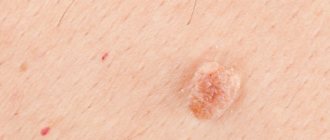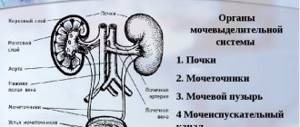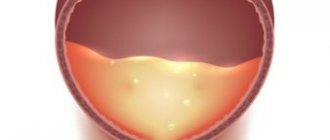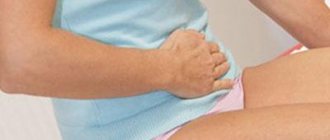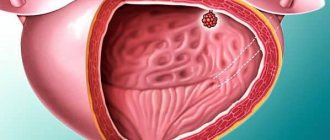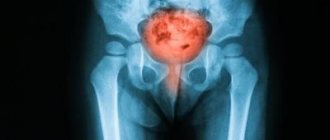Disturbances in the outflow of urine occur during the development of many diseases. Solutions are not always medicinal. Quite often, cystostomy is recommended or insisted on. In some cases, a catheter is connected, which is passed from the bladder to the urethra. Cystostomy of the bladder in men is the most common occurrence. Surgical intervention saved hundreds of lives. With its help, the outflow of urine is simplified. And the liquid itself is collected in a special reservoir. Now it will perform the functions of an organ.
What is a cystostomy, how it works
A cystostomy is a type of catheter that is used to remove waste products from a person suffering from diseases of the genitourinary system. An epicystostomy is introduced into the patient's body through surgery.
The surgeon cuts the anterior wall of the patient's abdominal cavity, performs perforation of the bladder, and then performs catheterization to install a permanent or temporary cystostomy. Removing the epicystostomy directly from the patient’s abdomen is necessary in cases where, due to pathologies of the excretory system, it is impossible to install a traditional Foley catheter.
The formation of a cystostomy is indicated for patients with the following types of diseases:
- urethral canal injuries;
- benign or malignant growth of prostate tissue in men;
- tumor growths in the walls of the bladder;
- dysfunction of muscle tissue responsible for the functioning of organs located in the pelvic area;
- stricture of the urethral canal.
A cystostomy is installed on a permanent basis when, due to severe illness or mechanical damage, the patient has experienced irreversible changes in the structure of the genitourinary system, or this type of catheterization is temporary.
For example, to restore the mucous membrane of the urethra, or tissue regeneration after surgery on other excretory organs. Immediately after installation of the epicystostomy, the algorithm for caring for the catheter is explained to the patient.
The principle of operation of a cystostomy is as follows:
- Urine, which is formed upon completion of metabolic processes, enters the cavity of the bladder.
- Due to the presence of an installed catheter, there is no accumulation of urine, but it immediately enters the drainage tube.
- From the drainage tube, urine flows into a plastic hose and then into the urinal.
The container for urine collection is completely sealed, which prevents urine from leaking or getting on clothes or other environmental items. In seriously ill and bedridden patients, the urinal is attached near the bed.
A prerequisite for the placement of this container is its location below the level of the bladder. Otherwise, due to the lack of gravity, it will not be possible to achieve the effect of random urine flow. Walking patients attach a urine bag to the surface of the leg using special fixing materials.
How to prepare for the procedure and how is it installed?
The installation of a cystostomy falls into the category of surgical operations and requires compliance with certain preparation rules.
A man needs to undergo a comprehensive examination and take several types of tests to determine his general health. Before the operation, pubic hair must be removed. A man can carry out this procedure on his own.
The preparatory stage for installing a cystostomy includes the following procedures:
- blood test to determine sugar levels;
- coagulogram;
- PSA level determination;
- general blood and urine analysis;
- urine culture;
- urethral smear;
- blood test for HIV, hepatitis and syphilis;
- blood clotting test.
On the day of surgery, it is recommended to fill your bladder with plenty of fluid . Avoid drinking carbonated drinks, coffee or strong tea.
You should not exercise before the cystostomy procedure.
Depending on the type of disease the patient has, doctors can prescribe individual measures to prepare for surgery.
Technique for installing a cystostomy:
- the operation is performed under local anesthesia;
- the bladder cavity is filled with Furacilin solution through a catheter;
- The surgeon inserts a Foley catheter through an incision in the front of the abdomen;
- the trocar is removed, and only the catheter tube remains in the bladder cavity;
- the tube is refilled with Furacilin solution;
- the surgeon secures the tube using a special technique.
Basic rules of care
Caring for a cystostomy (the algorithm for maintaining the catheter must be followed by the patient and medical staff) involves regular maintenance of the drainage tube and timely implementation of hygiene procedures.
Nursing care
Nursing care for epicystostomy involves round-the-clock monitoring of the patient’s general condition, as well as mandatory compliance with the following rules:
- ensure that the cystostomy catheter is not twisted, has no cracks, or other signs of perforation;
- in case of violation of the integrity of the epicystostomy or detection of urine leakage, immediately call the doctor on duty;
- perform daily antiseptic treatment of the patient’s skin surface located around the cystostomy opening (the frequency of hygiene procedures is determined by the attending surgeon);
- when the first signs of an inflammatory process or infection of epithelial tissues by pathogenic microorganisms are detected, carry out medicinal treatment of the affected areas of the skin (for example, use ointments, gels, emulsions with anti-inflammatory properties, which are prescribed by the doctor in case of complications);
- Empty the patient's urinal in a timely manner, preventing it from overflowing or rising above the level of the bladder;
- control the rate of urine outflow, and also pay special attention to ensure that it does not contain impurities of blood or sanguineous fluid (such symptoms always indicate acute or chronic inflammation, damage to bladder tissue);
- if there are direct instructions from a urologist, carry out preventive training of the muscles responsible for the functioning of the patient’s bladder (the catheter is compressed for 25-35 minutes, urine accumulates in the bladder, which ensures the preservation of the reflex function of the muscle fibers of the organ);
- the nurse who performs rinsing of the epicystostomy with special antiseptic solutions must observe the rules of sterility;
- hygienic care of the cystostomy is carried out only with disposable rubber gloves (opening the packaging with consumables is carried out immediately before performing these manipulations);
- if signs of a violation of the outflow of urine are detected, it is necessary to replace the catheter, or report this fact to the attending physician;
- ensure that the drainage tube removed from the patient’s abdominal wall is always securely fixed with a medical plaster and does not dislodge;
- replace the cystostomy catheter at least once every 7 days (otherwise the risk of tissue infection and the development of inflammatory processes increases).
A nurse caring for a patient with an epicystostomy should change the urinal bag every 24-48 hours. The best option is to carry out simultaneous hygiene procedures, antiseptic treatment of the skin around the drainage tube, and subsequent replacement of the urine collection container.
There should always be a spare set of cystostomy boat with a urine bag next to the patient. This is necessary to quickly replace the epicystostomy in case of complications or an emergency.
Home care
Caring for a cystostomy (the algorithm for performing actions is explained to the patient immediately after the installation of a drainage tube) at home does not differ significantly from its care in a medical institution.
In this case, the patient must follow the following rules:
- control the process of urine passing through the cystostomy catheter;
- ensure that the integrity of the drainage channel is not compromised, that kinks and other signs of malfunctions in its operation do not appear;
- if leakage of urine is detected, it is necessary to establish the source of urine spread, and if it is not possible to change the catheter independently, seek help from medical professionals;
- carry out daily antiseptic treatment of the skin located around the hole for the drainage tube (if signs of inflammation appear, you should visit a surgeon so that the doctor prescribes the use of appropriate medications);
- ensure that the urine container is located below the level of the bladder;
- When taking water procedures, always use only a shower (swimming in a bathtub, swimming pool, bathhouse, sauna is strictly prohibited);
- if you lead an active lifestyle, attach the urine bag to the surface of the leg (below the knee), securing the container with Velcro or other types of fastening material;
- daily for 10-15 minutes. block the outflow of urine by bending the catheter so that the bladder muscles are trained and its walls are not allowed to wrinkle;
- drink at least 1.5 - 2 liters of ordinary water without gases, not counting liquid dishes (maintaining a stable drinking regime plays an important role in caring for epicystostomy);
- provided that you have special knowledge and skills, flush the drainage tube with antiseptic solutions (otherwise it is better to contact a medical institution, where these manipulations will be performed by qualified specialists);
- a urinal with a capacity of 1.5 liters must be emptied at least every 8 hours;
- a sealed container for collecting urine with a volume of 0.5 to 1 liter is drained every 3-4 hours;
- urine removal is performed independently, using a special valve located in the lower part of the urinal;
- replace the cystostomy catheter at least once every 7 days;
- change the urinal bag every 24-48 hours.
The first aid kit of patients who independently care for an epicystostomy must have the following tools and consumables:
- sterile cystostomy catheter for quick replacement;
- a new and sterile urine container;
- a set of sterile medical gloves;
- adhesive plaster, antiseptic wipes;
- disinfectant solution.
Self-care for an epicystostomy should be carried out as carefully as possible without sudden movements, observing all the above rules. If any difficulties arise, you should seek medical help.
Preparing for cystostomy
Before performing a planned cystostomy, stop taking antiplatelet agents and anticoagulants (blood thinning drugs) to reduce the risk of uncontrolled bleeding. Consultation with an endocrinologist is mandatory for patients with diabetes, and women who are sexually active need to take a pregnancy test.
The main ways to install a cystostomy are:
- trocar cystostomy
- open cystostomy
Currently, the main type of cystostomy practiced is trocar. One of the main conditions for staging a cystostomy using a trocar is a full bladder. In an emergency setting, this problem does not arise, because this is the reason why a cystostomy is placed. During planned activities, the bladder is filled in advance by drinking a sufficient amount of fluid in advance.
You can make an appointment with a urologist or call a doctor at home from our consultants by phone
Prices for services Addresses of clinics Blood in urine Tests for sexually transmitted infections Urological ultrasound Calling a urologist to your home
Types of urinals, care algorithm
Caring for a cystostomy (the algorithm for servicing an epicystostomy involves observing sterility rules) begins with antiseptic treatment of the skin surface located at the site of attachment of the drainage tube. The table below describes the main types of urine bags.
| Type of urinal | Characteristics of epicystostomy |
| Bedside | This type of urinal is designed for use in hospital settings, when a seriously ill patient who is in a bedridden state needs urine drainage. This urine collection bag is attached to the side of the bed, and its replacement is carried out by the staff of the medical institution. |
| Foot | The foot urinal is designed for patients who, despite severe illness of the excretory system, continue to lead an active lifestyle and move a lot. This container for collecting urine is secured below the knee. Velcro is used as a fixing material. |
| Day | Daytime urinals are designed for use exclusively during daylight hours, when the patient is awake. |
| Night | Night urine bags are characterized by large volumes, which allow the patient to sleep peacefully without worrying about the need to drain urine from an overfilled container. |
Based on urine capacity, urinals are divided into medium ones, with a volume of 0.5 to 1 liter, and large ones. The last type of container can collect 1.5 liters of urine. The main advantage of large urinals is that they can be emptied no more than once every 8 hours.
Preparation
Caring for a cystostomy (the algorithm for performing actions is prescribed in the instructions for servicing the catheter) begins with the following preparatory measures:
- wash your hands thoroughly using soap, warm water and a clean towel;
- prepare all necessary consumables, which must be sterile (medical gloves, antiseptics, wipes, bandages);
- purchase a Janet syringe, which is necessary for flushing the drainage tube;
- prepare in advance a physical solution that will be used to remove mineral salts;
- Place a basin next to you, or drain the liquid into the bathroom or toilet.
While caring for your epicystostomy, you can be in a sitting or upright position. The patient needs to position himself so that it is as comfortable as possible to perform body hygiene, change the catheter or urinal.
Catheter replacement procedure
The procedure for replacing the catheter is performed independently at home, or these manipulations are performed by medical personnel in a hospital urology department. It is enough to disconnect the drainage hose from the urinal, as well as from the tube removed from the abdominal cavity.
After this, you can begin flushing the catheter or perform other activities related to caring for the epicystostomy. If it is necessary to replace the catheter, a new hose is connected to the base of the drainage tube and the inlet of the urine collection container. The average duration of a cystostomy catheter change is from 5 to 10 minutes.
Urinary Tube Care
The drainage tube requires careful and regular care, which involves performing the following algorithm of actions:
- you will need to take a Janet syringe and then draw 100 ml of physical solution into it;
- the specified amount of the drug is injected into the drainage tube and directly into the cavity of the bladder;
- then it is performed by pouring the liquid into a basin, toilet or bathtub;
- flushing of the drainage tube continues until absolutely clean liquid begins to flow into the previously prepared vessel.
The use of a physical solution is necessary in order to clean the drainage tube from mineral salts that accumulate in its cavity, disrupting the natural outflow of urine. For disinfection purposes, antiseptic solutions are used, the type of which is determined by the attending physician.
Removal of cystostomy from the bladder of men and women
Removal of a cystostomy from the bladder cavity of men and women is carried out according to the same principle, namely:
- it is necessary to wash the skin surface located around the opening in the abdominal cavity;
- use an antiseptic to treat epithelial tissues to prevent infection;
- carefully and without sudden movements, remove the drainage tube from the abdominal cavity;
- If it is necessary to replace the urine drainage device, a new cystostomy should be inserted into the bladder.
The optimal frequency of changing epicystostomy is once every 30 days. If you do not have the practical skills to replace a drainage tube yourself, it is recommended to seek help from a urologist. The average cost of this procedure is 2000 rubles.
How to rinse the bladder with a cystostomy?
The tube flushing procedure includes the following steps:
- before washing the cystostomy, it is necessary to disconnect the tube from the urinal;
- a 3% solution of boric acid is injected into the hole of the tube (using a Janet syringe);
- a single dosage of the solution should not exceed 40 ml;
- after introducing the specified amount of solution, the syringe is disconnected and the liquid is poured into the container;
- The washing procedure must be repeated until the liquid becomes clear.
In most patients, a characteristic fluid is observed at the sites of skin incision. To prevent infection, special dressings must be used. First, the incision site is treated with antiseptic ointment.
Then a special bandage impregnated with an antiseptic (sold in pharmacies) is applied to it and secured with a medical plaster. Dressing can be done independently, but it must be done regularly .
Complications due to lack of cystostomy care
In the absence of proper care for epicystostomy, the patient may experience the development of the following complications:
- infection of the tissue of the hole through which the drainage tube is inserted;
- inflammation of the walls of the bladder, which also occurs due to bacterial, viral or fungal microorganisms entering this organ;
- bladder perforation;
- accidental removal of a cystostomy during sleep;
- closure of the fistula channel through which the epicystostomy is removed;
- purulent-inflammatory processes in the anterior wall of the abdominal cavity, which develop immediately after surgery.
In most cases, the above complications are accompanied by characteristic symptoms such as the appearance of blood in the urine, a feeling of acute or cutting pain that is localized in the lower abdomen, and an increase in body temperature.
The need for cystostomy
Until there are problems with the urinary system, a person, in most cases, has no idea about such a device as a cystostomy.
In a possible situation when the bladder is completely filled and there is no feeling of need to empty the bladder, resort to the help of a catheter. This is the most common method for helping with urination.
If pathologies of various nature are present or the patency of the canal is clogged in the presence of stones, then the need arises
Use of cystostomy
.
Possible consequences of wearing a cystostomy
Prolonged wearing of an epicystostomy can lead to the following negative consequences, most of which significantly reduce the patient’s quality of life:
- atrophy of the muscle fibers responsible for the functions of the bladder;
- increased sensitivity of epithelial tissues located around the entrance to the drainage hole;
- wrinkling of the bladder walls;
- periodic spasms of the urethral canal;
- clogging of the drainage tube or catheter with mineral salts present in urine;
- discharge of urine at the entrance to the fistula opening, which causes wetness of the skin and clothes.
In order to minimize the development of the above consequences caused by long-term wearing of an epicystostomy, it is necessary to properly care for the drainage tube and catheter, and also not to violate the rules for its installation.
Positive and negative sides
Long-term use of a cystostomy leads to damage and irritation of the urethra. Installation of the device affects the narrowing of the organ, thereby causing urine leakage. Bladder cystoma in men has the most discomfort, since the organ has a curved structure.
Significant advantages are:
- installation reliability;
- no possible damage to the urinary tract;
- ease of use and maintenance;
- lack of influence on sex life;
- If there is a possible blockage of the tube, there is another way to empty the bladder.
Cystostomy
Cystostomy also has a number of disadvantages:
- the procedure is contraindicated for people who are overweight;
- getting the outer hole wet;
- If the tube is inserted incorrectly, complications may occur;
- there is a possibility of clogging the hole with salt-type deposits;
- negative reaction of the body to the presence of a foreign object.
Recommendations for patients with cystostomy
Patients who have an epicystostomy must completely change their lifestyle and adapt to the new mechanism of urine diversion.
In this case, the following recommendations must be followed:
- minimize the consumption of liquids that irritate the mucous membrane of the excretory organs (fresh juices, strong tea, carbonated drinks);
- use thigh straps to prevent accidental pulling out of the catheter;
- in the case of using a foot container, it is necessary to move the urine bag from one leg to the other, performing these actions several times during the day;
- eat more foods that contain fiber (following this recommendation will minimize the risk of developing constipation, which is very important for patients with epicystostomy who avoid unnecessary strain on the anterior wall of the abdominal cavity);
- Always have a spare catheter, drainage tube and urine bag with you.
Patients who suffer from spasms of the bladder or urethral canal walls may need to take antispasmodics periodically. For example, Drotaverine or Papaverine, which are taken 1 tablet at the time of spasm.
Indications for device installation
A cystostomy of the bladder in men is installed when the urethra is damaged due to a rupture or tear of the mucous membrane. Men often suffer from this disease due to fractures of the penis.
A cystostomy is also installed:
- during the treatment of acute prostate disease;
- in the formation of an adenoma due to the proliferation of glandular tissue;
- due to the formation of a false type of urethral canal;
- with the formation of neck stenosis in the bladder;
- with open adenectomy during the first stage;
- in connection with the formation of central and peripheral innervation of the pelvis;
- with damage to the urethra.
Life expectancy with installed epicystostomy
Provided there are no complications and all rules for caring for a cystostomy are followed, the prognosis for future life is favorable. The presence of epicystostomy does not cause premature death.
A reduction in life expectancy is possible if, due to violation of the rules for caring for a cystostomy, an infectious infection of the bladder and other organs of the pelvic area occurs.
A cystostomy is a drainage tube that is inserted into the abdomen and then placed into the bladder. The main purpose of this type of catheterization is to drain urine from the body of a patient who has severe diseases of the excretory system (prostatic hyperplasia, cancer of the bladder and its ducts, urethral stricture).
Caring for a cystostomy involves following an established algorithm of actions aimed at timely cleaning and replacement of the catheter, urinal, and drainage tube. The main disadvantage of epicystostomy is the reduction in the patient’s quality of life, dependence on constant care, and the need for periodic emptying of an overfilled container.
What complications of using a cystostomy are possible for women?
Possible complications of using a cystostomy in women are almost identical to the complications that develop in men. Regarding possible complications , doctors name the following points:
- Perforation of the urethral walls and internal and external bleeding.
- Severance of part of the catheter due to incorrect placement and subsequent care.
- Infection of tissues and organs , and in the absence of timely treatment, provoke the course of cystitis and urethritis, pyelonephritis.
- Perforation of the rectum during installation of an epicystostomy - this happens if the bladder was not filled beforehand.
Less commonly, inflammation of the tissue in the area where the catheter is inserted and an allergy to the material from which the catheter itself is made appear.
